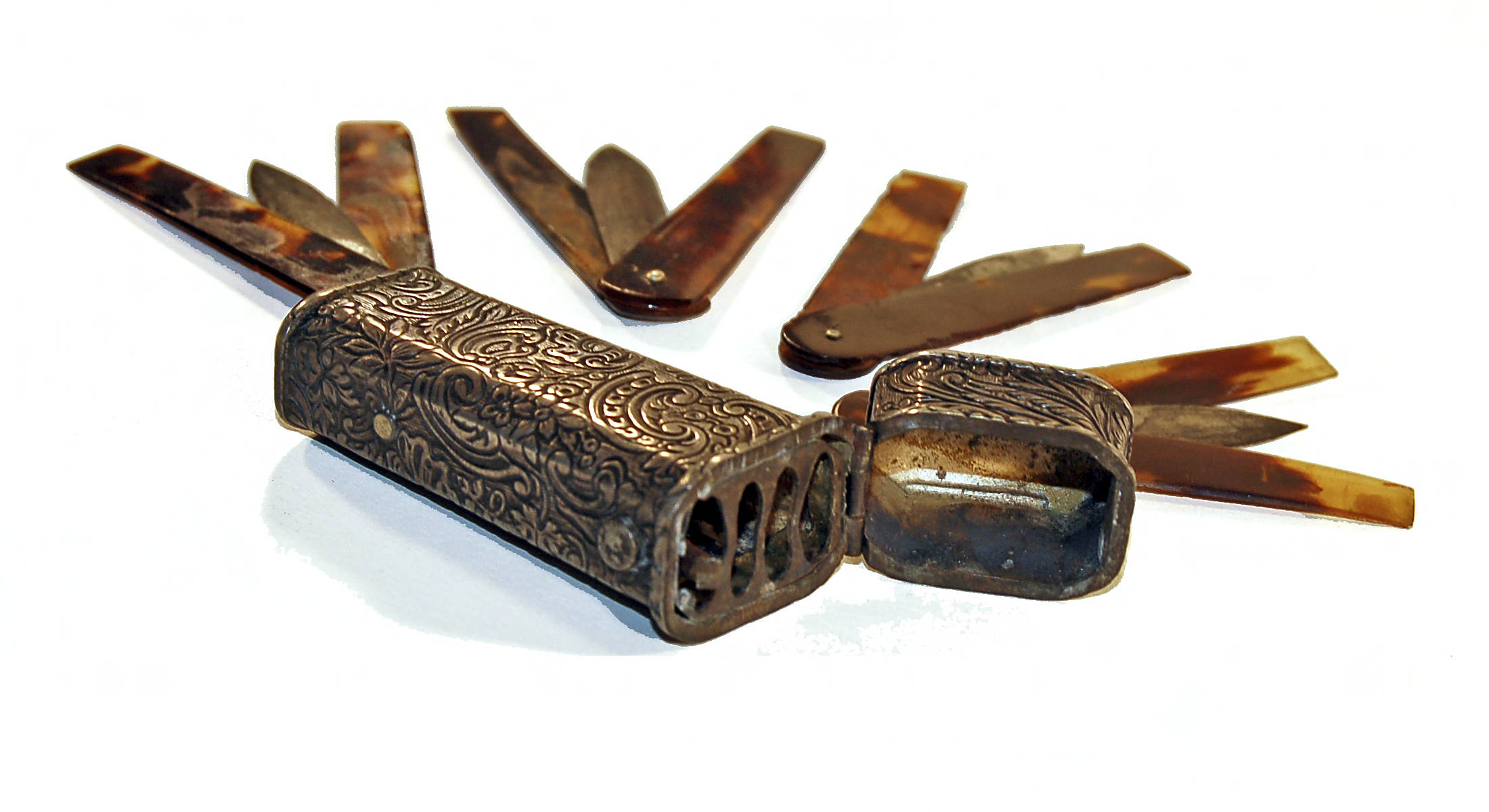Piece of the Past
In the 18th and 19th centuries, physicians often relied on spring lancets to perform bloodletting, one of medicine's oldest therapies.

The VCU Health Sciences Library houses a lancet set manufactured by Evans Old Change that dates to 1840 to 1860. This elaborately detailed British set has four blades and is kept in a tall, bronze case with a hinged latch. The entire surface is intricately engraved with botanical patterns, including grapes, leaves and flower blossoms. (Photo by VCU Libraries)
This story was published in the fall 2022 issue of 12th & Marshall. You can find the current and past issues online.
Hoping to inflict as little pain as possible when performing a bloodletting, physicians often relied on spring lancets to perform the procedure.
“It was easier to have it happen in one swift motion,” says Jodi Koste, university archivist for VCU’s Health Sciences Library. “It was believed to be more accurate.”
Bloodletting is one of medicine’s oldest therapies, dating to the Middle Ages. Thought at the time to rid the body of impure fluids and cure a variety of conditions—from plague and smallpox to epilepsy and gout—it was widely practiced into the 18th and 19th centuries.
“There were a whole different set of medical theories back then,” Koste says. “It was believed that removing blood would bring the body back into balance.”
The Health Sciences Library houses about 6,500 medical artifacts, Koste says. About 25 of those are lancets, including a spring lancet that dates to 1850 to 1890. Manufactured by Wiegand of Philadelphia, the brass lancet is housed in a brown leather case. The case is lined with chamois and has a hook-shaped latch. The lancet body and levers are brass, and the blade, which measures about one-half inch, is steel.
“Most lancets had cases to protect the blade,” Koste says. “If the blade were to get battered, that would cause more pain for the patient.”
To use a spring lancet, the practitioner would pull back a lever, coiling the interior spring. When the lever was released and the spring recoiled, the silver blade would drive into the patient.
“Bloodletting is very foreign to contemporary audiences,” Koste says. “That’s what makes lancets such fascinating pieces.”
The Health Sciences Library also houses a lancet set manufactured by Evans Old Change that dates to 1840 to 1860. This elaborately detailed British set has four blades and is kept in a tall, bronze case with a hinged latch. The entire surface is intricately engraved with botanical patterns, including grapes, leaves and flower blossoms.
The blade sizes are slightly different, but all are about an inch long. Each blade has a thin tortoise shell guard, and a small metal pin allows each blade to be folded out of the guard. Blade and guard pieces can rotate freely around the pin.
“The reason physicians might have something so fancy looking is it showed they were established,” Koste says. “That might have appealed to middle- and upper-class patients and give them more confidence in the physician’s ability.”
Unfortunately, Koste says, the library has no record of the donors or when the gifts were made. But that certainly doesn’t keep visitors from enjoying them. School groups, she says, get a particular kick out of the lancets.
“The reaction is either, ‘cool’ or ‘gross,’” Koste says. “They are such valuable pieces because they show us just how much medicine has changed. It shows the evolution of the discipline and how inventive physicians could be. While so much has changed, the goal of medicine has not. It’s always been about doing everything possible to help the patient.”